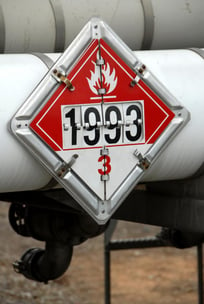With sadness, we read of the fatality in the nitrous oxide related "Airgas explosion likely loading dock accident" article by the Pensacola News Journal. The accident took place at the Airgas facility's Ascend Performance Materials' chemical plant where two semis were delivering the substance. Details are still forthcoming though no intentional act appears to be at play. 
We often explain to customers (so often, its on our website) that when goods are to be transported, there are many regulations that need to be followed in order to assess and classify the hazards associated with the specific material. This can be an important factor in the design and commercialization of a specific good. Slight changes in the composition of the material may not change the overall end use of the product but could possibly result in a change in its hazard classification.
UN/DOT transportation testing of potentially dangerous goods requires vigilance. “Dangerous goods” may be pure chemical substances, mixtures, or manufactured articles. An engineering lab with extensive experience in characterizing the explosive or flammable nature of solids, liquids, vapors and gases is ideal for consideration of all possible accident scenarios. Depending on the classification, some substances may be certified once a year, recertified fairly routinely or require more extensive certification with even subtle changes.
The following testing services help determine the proper shipping classification for the following types of hazards:
Class 3: Flammable Liquids
The flammable liquids classification is determined by evaluating the flash point of the liquid. The packing group is then assigned based on the range at which the flash point of the liquid falls within.
Class 4: Flammable Solids, Division 4.1: Flammable Solids, Self-Reactive Substances and Solid Desensitized Explosives
The Burning Rate test is used to classify materials as “flammable solids”. The test involves exposing a powder train (250 mm x 20 mm x 10 mm) to a flame or hot wire with a temperature of 1000°C. Classification is then based on the materials burning rate.
Class 4: Flammable Solids, Division 4.2: Substances Liable to Spontaneous Combustion
The Self-Heating Substances test is used to determine if substances are “spontaneously combustible”. The test involves exposing various quantities of sample to temperatures of 100°C, 120°C and 140°C for a period of 24 hours. During the exposure time, the temperature of the sample is monitored for exothermic activity. Classification is then based on the occurrence of exothermic activity and the size and temperature at which it occurred.
Class 4: Flammable Solids, Division 4.3: Substances, Which in Contact With Water, Emit Flammable Gases
The Dangerous When Wet test is used to determine if the material is capable of generating flammable gases when it comes into contact with water. This is a multistep test that involves exposing the material to small quantities of water and evaluating if flammable gases are generated. Classification is then based on the evidence of flammable gas evolution and the rate at which these gases evolve.
Class 5: Oxidizing Substance, Division 5.1: Oxidizing Solids
The Solid Oxidizing Substance test is used to identify if a material has hazardous oxidizing properties. The test involves mixing the sample with various quantities of a known combustible material and comparing the burning characteristics to that of a known oxidizer/fuel mixture. Classification is then based upon how intensely the sample burns. Please also see:Introducing UN Test O.2 Oxidizing Liquids (Combustible Hazard).
Results from these tests will identify if your material falls into one of these categories and, if so, the degree of danger these materials present.
Thoughts? Burn Rate Testing may be the subject of another blog as questions on this seem to be cropping up among our customers and readers. Our prayers and deepest condolences are with the family of the unfortunate Airgas employee. For more information on hazardous materials test or to discuss, please comment here or contact: Paul Osterberg, Director of Flammability Services, FAI Osterberg@fauske.com, 630-887-5248
#un dot test #un-dot testing #un transportation #hazardous testing #hazardous material #hazardous materials #flash point testing

